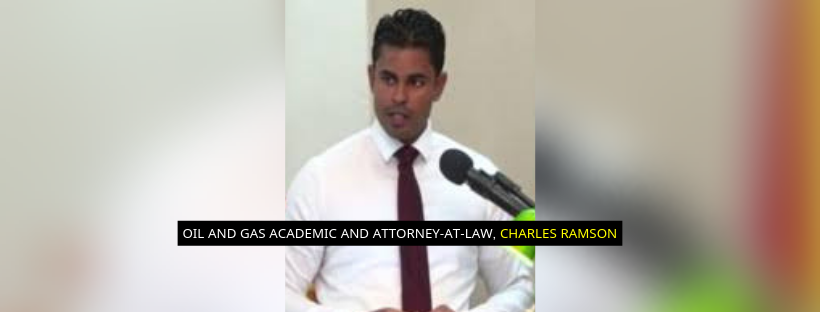The Working People’s Alliance (WPA)’s oil revenue cash transfer proposal lacks accuracy and can be branded as “zombie economics”, so says Attorney-at-law and Oil and Gas Consultant, Charles Ramson. The Opposition-aligned lawyer said this in response to the WPA’s co-leader, Professor, Clive Thomas who recently made a public presentation on cash transfers from oil proceeds.
Ramson said that Dr. Thomas falls short in truly grasping the intricacies of oil revenue generation and production procedures.
Ramson claims that the Professor’s assumptions are incorrect, particularly in the area of production. He said that while Dr. Thomas claims that Guyana’s oil production will soar to 1m to 2.5 million barrels per day (mbpd) by 2025, this estimated production is far off from the “best-case” scenario, and therefore unrealistic.
“This is not only wrong; it is also impossible. The best-case scenario for Guyana’s oil production is about 780,000 bpd by 2025 and that is if everything goes perfect which means that there are no delays in project approvals and project execution, and no unforeseen events. As it stands right now, there is no serious consideration or the possibility of Guyana producing 1.5 mbpd let alone 2.5 mbpd by even 2030,” Ramson noted.
He disagreed too with Thomas’ assumption that production profiles stay static.
The lawyer said that oil field production differs from that of a factory. Even with the application of enhanced recovery techniques, daily production can fall by 33% to 50% within 10 years. He alluded to a scenario at Ghana’s Jubilee field, where the floating production and storage offshore (FPSO) was built for 120,000 bpd, but is currently producing about 80,000 bpd and it has gone down to low figures like 60,000 bpd. There were even periods when the entire operation had to be shut down so there was no production, Ramson said.
The attorney-at-law noted also that Thomas’ calculation of the 10% after-tax revenue figure is incorrect. Ramson argues that no one knows what govt revenue would look like around 2025 because the final development plans for project 4 and 5 have not been completed to be sure of their respective or total capital expenditure.
Ramson said, “Capital expenditure has to be recovered and the 75% cost recovery delays govt’s share. Project 4 and 5 could cost anywhere between 5 to 10 billion USD. This means there are huge sensitivity variations when you have those large variations in project developmental costs which at this point is not known with certainty. No one knows what the exploration costs would be since there is a continued exploration in the block which would also have to be recovered.”
Ramson spoke also about calculations being done using a fixed price per barrel of oil in Thomas’ presentation. “His calculation at US$70 per barrel is wildly optimistic and pointless. In the last 30 years, there were only 7 years when the average price of oil averaged above $70 for the year. In fact, if you look at the last 5 years the average price has been just above $50.”
This fluctuation he noted, stems from the wider application of fracking, which does not require long lead times to start production like conventional production where the average is just under 5 years in mature basins.














Charles Ramson did one year in England who made him an oil and gas consultant.